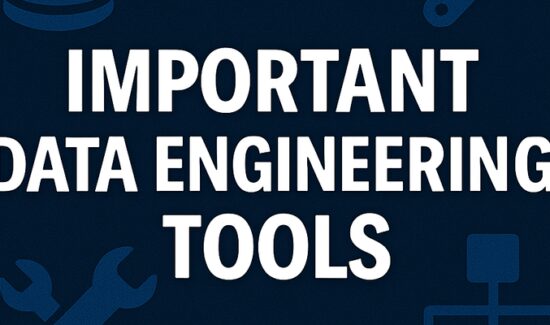The 17 Best AI Agents for Data Integration to Consider in 2025


Solutions Review Executive Editor Tim King explores the emerging AI application layer with this authoritative list of the best AI agents for data integration.
The proliferation of generative AI has ushered in a new era of intelligent automation — and AI agents are at the forefront of this transformation. From schema-mapping copilots and connector builders to autonomous agents that harmonize formats, resolve metadata conflicts, and maintain referential integrity across systems, AI agents are rapidly reshaping how modern data teams approach integration.
In this up-to-date and authoritative guide, we break down the top AI agents and agent platforms available today for data integration, grouped into clear categories to help you find the right tool for your specific needs — whether you’re unifying siloed data sources, enabling real-time sync between platforms, or embedding AI into your integration fabric.
This resource is designed to help you:
- Understand what makes AI agents different from traditional data integration tools and middleware
- Explore the capabilities and limitations of each available agent or agent-enabled platform
- Choose the best solution for your team based on integration complexity, scale, and architecture
Whether you’re managing multi-source ETL, transforming data on the fly, syncing across APIs, or enabling AI-ready pipelines — there’s an AI agent for that.
Note: This list of the best AI agents for data integration was compiled through web research using advanced scraping techniques and generative AI tools. Solutions Review editors use a unique multi-prompt approach to employ targeted prompts to extract critical knowledge to optimize the content for relevance and utility. Our editors also utilized Solutions Review’s weekly news distribution services to ensure that the information is as close to real-time as possible.
The Best AI Agents for Data Integration
The Best AI Agents for Data Integration: Data Integration and Management Platforms
These tools assist in integrating, managing, and analyzing data from various sources.
Databricks
Use For: Unified analytics, ETL, and machine learning in a scalable lakehouse environment
Databricks is a cloud-based data and AI platform built around Apache Spark and the lakehouse architecture, which combines the scalability of data lakes with the performance of data warehouses. Designed for collaborative data engineering, analytics, and machine learning, Databricks enables teams to ingest, process, transform, analyze, and model data in a single unified environment.
With native support for Delta Lake, Databricks ensures ACID-compliant data reliability and version control, making it a top choice for enterprise-grade workflows that require data quality, reproducibility, and scalability.
Key Features:
-
Collaborative notebooks with support for Python, SQL, R, and Scala
-
Auto-scaling clusters for cost-efficient batch and stream processing
-
Native support for Delta Lake, MLflow, Spark Streaming, and structured streaming
-
Integration with Snowflake, dbt, BI tools, and cloud data lakes
-
Built-in tools for model tracking, deployment, and governance
Get Started: Use Databricks when your data engineering workflow spans ETL, real-time pipelines, and AI, and you need a centralized platform to manage everything from raw data ingestion to model deployment — with collaboration, scalability, and governance built in.
Snowflake
Use For: Scalable, low-maintenance cloud data warehousing with AI-ready integrations
Snowflake is a fully managed cloud data warehouse-as-a-service (DWaaS) that separates compute and storage for on-demand scalability, making it ideal for modern data engineering teams. It supports structured and semi-structured formats (like JSON and Avro), and runs on AWS, Azure, or Google Cloud — offering fast, elastic performance with zero infrastructure management.
Snowflake simplifies the process of data ingestion, transformation (via SQL or Snowpark), and sharing, while providing native support for AI and ML integrations.
Key Features:
-
Virtual warehouses that scale compute resources independently
-
SQL-native development with Snowpark for Python, Java, and Scala
-
Support for JSON, Parquet, Avro, XML, and other semi-structured formats
-
Native integrations with dbt, Fivetran, Apache Kafka, and AI/ML tools
-
Secure data sharing across organizations and cloud regions
Get Started: Use Snowflake when your data engineering workload revolves around scalable ingestion, storage, and transformation of structured/semi-structured data, and when you need fast query performance, data sharing, and AI/BI integrations without infrastructure management headaches.
dbt (Data Build Tool)
Use For: In-warehouse SQL transformations with version control, testing, and modular logic
dbt (short for data build tool) is a command-line tool and development framework that enables data teams to transform data inside modern cloud data warehouses like Snowflake, BigQuery, Redshift, and Databricks. Rather than performing ETL outside the warehouse, dbt promotes the ELT (Extract, Load, Transform) paradigm — with transformations written in modular, testable SQL files that live in version control.
dbt brings software engineering best practices like modularity, code reuse, testing, documentation, and CI/CD into the SQL transformation layer — helping data teams build clean, reliable data pipelines that scale.
Key Features:
-
Modular SQL models that are compiled into optimized queries
-
Built-in testing for schema, nulls, and relationships
-
Auto-generated documentation with column-level lineage
-
Compatible with git-based workflows and CI/CD pipelines
-
Rich ecosystem with dbt Cloud, dbt Core, and dbt packages
Get Started: Use dbt when you want to build, document, and test your SQL transformation logic like software code — especially effective for teams centralizing transformation work within cloud data warehouses using ELT.
Fivetran
Use For: Fully managed data ingestion with zero-maintenance ELT pipelines
Fivetran is a fully managed ELT (Extract, Load, Transform) platform that automates the process of syncing data from hundreds of sources into cloud data warehouses like Snowflake, BigQuery, Redshift, and Databricks. Known for its plug-and-play experience, Fivetran offers prebuilt connectors for popular services like Salesforce, Stripe, HubSpot, PostgreSQL, and many others — enabling engineers to stop writing and maintaining custom ingestion code.
Fivetran handles schema drift, API changes, and sync failures, allowing teams to focus on modeling and analysis instead of low-level extraction and integration.
Key Features:
-
700+ source connectors for SaaS, databases, cloud storage, and files
-
Automatic schema detection, column mapping, and change data capture (CDC)
-
Incremental loading for efficiency and freshness
-
Built-in monitoring, logging, and alerting
-
Works seamlessly with dbt for downstream transformations
Get Started: Use Fivetran when your goal is to quickly and reliably centralize third-party or operational data into your warehouse — especially useful in analytics-driven environments where pipeline reliability and simplicity are more valuable than deep customization.
Talend
Use For: Enterprise-grade data integration, governance, and hybrid data pipeline management
Talend is a comprehensive data integration and transformation platform designed to support ETL, ELT, data quality, governance, and API services across both cloud and on-premises environments. With a visual drag-and-drop interface and a vast library of prebuilt connectors, Talend enables teams to connect disparate systems — from legacy databases to modern cloud platforms — in a single, centralized workflow.
Talend excels in highly regulated industries or large enterprises where data quality, lineage, and compliance are critical.
Key Features:
-
Visual workflow designer with 1,000+ prebuilt connectors
-
Support for batch, real-time, and hybrid integration
-
Built-in tools for data quality, masking, lineage, and stewardship
-
Integration with Snowflake, AWS, Azure, SAP, Salesforce, and more
-
Enterprise deployment options: on-premises, hybrid, and cloud-native
Get Started: Use Talend when you need a scalable, secure platform to build, manage, and govern data pipelines across hybrid or legacy environments, especially in sectors where compliance, lineage, and quality enforcement are top priorities.
Stitch (Qlik)
Use For: Lightweight, developer-friendly cloud ETL for fast and simple data replication
Stitch is a simple, cloud-native ETL service designed to help teams quickly extract and load data from dozens of sources into modern cloud data warehouses like Snowflake, BigQuery, and Redshift. Acquired by Talend, Stitch provides a developer-friendly interface and open-source foundation (Singer), making it a great choice for fast-moving teams who want to stand up data pipelines with minimal overhead.
It focuses on simplicity and speed, offering basic transformation features while encouraging teams to handle modeling downstream with tools like dbt.
Key Features:
-
100+ built-in connectors for SaaS apps, databases, and APIs
-
Automatic data extraction and loading with incremental sync support
-
Scheduling, logging, and usage tracking
-
Built on Singer — open-source standard for connectors and replication
-
REST API and CLI for integration into DevOps workflows
Get Started: Use Stitch when your team needs a lightweight, no-fuss way to centralize data from multiple systems into your warehouse — especially when combined with dbt for transformation and modeling downstream.



















